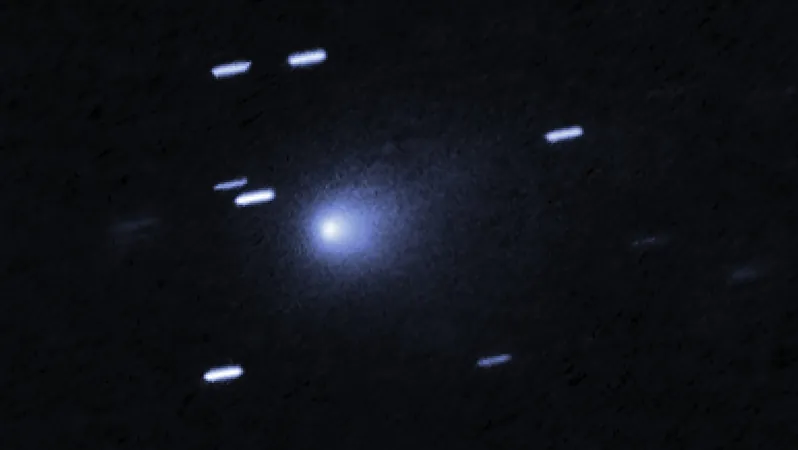
Interstellar Objects: The Cosmic Seeds for Planet Formation!
2025-09-15
Author: Nur
Astounding Discoveries from the Cosmos
Recent revelations about interstellar objects like 3I/ATLAS could rewrite our understanding of planet formation. These celestial wanderers, ejected from their home systems, may actually act as pivotal seeds for developing giant planets in the dusty discs surrounding young stars.
What Are Interstellar Objects?
Interstellar objects, akin to asteroids and comets, traverse the vastness of space. Since the remarkable discovery of the first interstellar visitor, 1I/'Oumuamua, in 2017, astronomers have identified three such objects that have passed through our Solar System: 1I/'Oumuamua, 2I/Borisov, and the newly spotted 3I/ATLAS, found in the summer of 2025.
A Groundbreaking Theory!
Professor Susanne Pfalzner of Forschungszentrum Jülich in Germany recently presented her groundbreaking findings at the EPSC-DPS2025 Joint Meeting in Helsinki. She posits that interstellar objects could kickstart planet formation, particularly around high-mass stars.
The Formation Mystery Solved!
Traditionally, the formation of planets through accretion—a process where small particles coalesce—has baffled scientists. In simulations, larger objects often collide and break apart rather than combine. However, Pfalzner's research suggests that these interstellar objects could be the key to overcoming this hurdle.
Cosmic Delivery of Planet Seeds
According to Pfalzner's models, countless interstellar objects, approximately the size of 1I/'Oumuamua (about 100 meters in length), could be gravitationally captured by the dusty discs around young stars. "Interstellar space could deliver ready-made seeds for the formation of the next generation of planets," she explained.
Giant Planet Formation Made Easier!
The implications of this research address a puzzling phenomenon: gas giant planets like Jupiter are seldom found around cooler, smaller stars known as 'M dwarfs' but are more common around more massive stars like our Sun. The short lifespan of planet-forming discs around Sun-like stars makes it difficult for gas giants to form. However, if these interstellar objects act as seeds, they could significantly speed up the planet formation process within these limited timeframes.
Next Steps in Research
Pfalzner's next challenge is to model the effectiveness of these captured interstellar objects. She aims to determine how many of these celestial wanderers can effectively become planetary bodies and whether they cluster in specific regions of a planet-forming disc—potential hotspots for new planets.
Unlocking the Secrets of our Cosmos!
This groundbreaking research could illuminate the mysteries of how giant planets form across the universe, ultimately reshaping our understanding of celestial evolution. The cosmos may hold more secrets than we ever knew, and interstellar objects might just lead the way!


 Brasil (PT)
Brasil (PT)
 Canada (EN)
Canada (EN)
 Chile (ES)
Chile (ES)
 Česko (CS)
Česko (CS)
 대한민국 (KO)
대한민국 (KO)
 España (ES)
España (ES)
 France (FR)
France (FR)
 Hong Kong (EN)
Hong Kong (EN)
 Italia (IT)
Italia (IT)
 日本 (JA)
日本 (JA)
 Magyarország (HU)
Magyarország (HU)
 Norge (NO)
Norge (NO)
 Polska (PL)
Polska (PL)
 Schweiz (DE)
Schweiz (DE)
 Singapore (EN)
Singapore (EN)
 Sverige (SV)
Sverige (SV)
 Suomi (FI)
Suomi (FI)
 Türkiye (TR)
Türkiye (TR)
 الإمارات العربية المتحدة (AR)
الإمارات العربية المتحدة (AR)